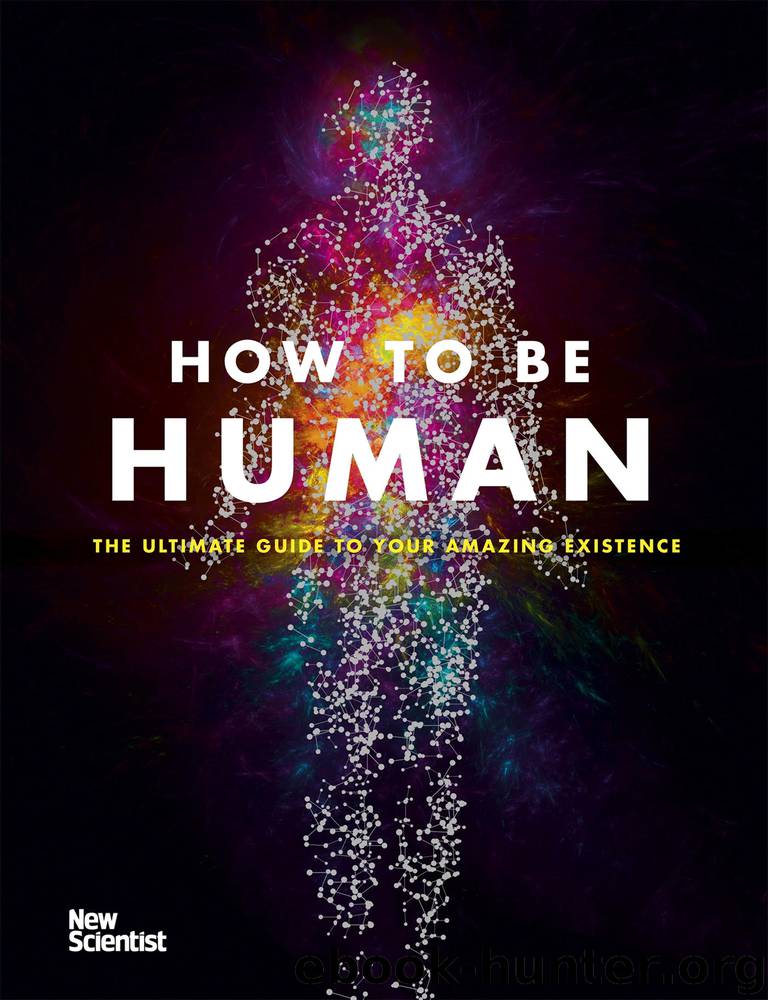How to be Human by New Scientist

Author:New Scientist
Language: eng
Format: epub
ISBN: 9781473629271
Publisher: Quercus
How survival kits have changed in 5,000 years
On the social media site Instagram, thousands of people in the US post photos with the hashtag #edc, meaning ‘everyday carry’. These show the tools, weapons and accoutrements that they haul around day in, day out. Men also show off the contents of their pockets through #pocketdump, whereas women tend to favour #whatsinmybag.
The core stuff is remarkably similar for both groups. The possessions we keep closest every day have a special practicality, concreteness, intimacy and symbolic importance. As the tool-making species, we are what we carry. And what we carry might offer a guide to what we really need, stripped of the clutter of overconsumption.
Tracing back in time
For an evolutionary psychologist it is natural to wonder if we can link our everyday stuff to that of our distant ancestors, for whom raw survival dictated most of their possessions.
Sadly, we don’t have any prehistoric #pocketdump or #whatsinmybag images, but we do have some useful clues from Ötzi, a man who lived about 5,300 years ago, and whose ice-preserved body was found in the Italian Alps in 1991. Since then, we have learned a lot about him, from his genome and the proteins expressed in his brain to the make-up of his gut microbes and his lethal arrow wound. His possessions were also well-preserved: a diverse set of clothes, tools, weapons, fire-makers, supplies and foul-weather gear suitable for his mixed role as soldier, hunter, camper and explorer.
Much of his gear looks primitive to modern eyes. But Ötzi wasn’t a distant ancestor: he had an anatomically modern brain in an anatomically modern body. In terms of timescale, we are no further from Socrates than Socrates was from Ötzi. So we should be able to find similarities between what he carried and our essentials.
Many are obvious. Ötzi’s tinder fungus and flint for making fires is analogous to a lighter. His lumps of birch polypore fungus had antibiotic and anti-parasitic properties, as well as the ability to stop bleeding. It was the ancient equivalent of carrying a first-aid kit, complete with antibiotics, deworming tablets and adhesive bandages.
Leggings, boots and bag
Likewise, Ötzi’s clothing and luggage make sense to us as everyday essentials. His well-worn, often-repaired goat-hide leggings are akin to a favourite pair of jeans. His deerskin shoes with bearskin soles are like rugged boots. His leather backpack is today’s bag to haul around our essentials.
But it is Ötzi’s weapons that get to the heart of the search for our essential possessions – namely, the ability to acquire food. His longbow was a work in progress. If he had lived long enough to finish making it, it would have been a formidable weapon, capable of killing animals up to 40 metres away. In the same vein, Ötzi’s prize possession was probably his axe, which had a blade of almost pure copper. It could have chopped down trees, split firewood and defended against other humans and predatory animals. Security and warmth are core necessities for us, too.
Of course, across much
Download
This site does not store any files on its server. We only index and link to content provided by other sites. Please contact the content providers to delete copyright contents if any and email us, we'll remove relevant links or contents immediately.
Sapiens: A Brief History of Humankind by Yuval Noah Harari(14322)
Sapiens by Yuval Noah Harari(5325)
Pale Blue Dot by Carl Sagan(4960)
Homo Deus: A Brief History of Tomorrow by Yuval Noah Harari(4874)
Livewired by David Eagleman(3730)
Origin Story: A Big History of Everything by David Christian(3666)
Brief Answers to the Big Questions by Stephen Hawking(3394)
Inferior by Angela Saini(3294)
Origin Story by David Christian(3170)
Signature in the Cell: DNA and the Evidence for Intelligent Design by Stephen C. Meyer(3103)
The Gene: An Intimate History by Siddhartha Mukherjee(3075)
The Evolution of Beauty by Richard O. Prum(2966)
Aliens by Jim Al-Khalili(2804)
How The Mind Works by Steven Pinker(2782)
A Short History of Nearly Everything by Bryson Bill(2666)
Sex at Dawn: The Prehistoric Origins of Modern Sexuality by Ryan Christopher(2500)
From Bacteria to Bach and Back by Daniel C. Dennett(2462)
Endless Forms Most Beautiful by Sean B. Carroll(2447)
Who We Are and How We Got Here by David Reich(2418)
